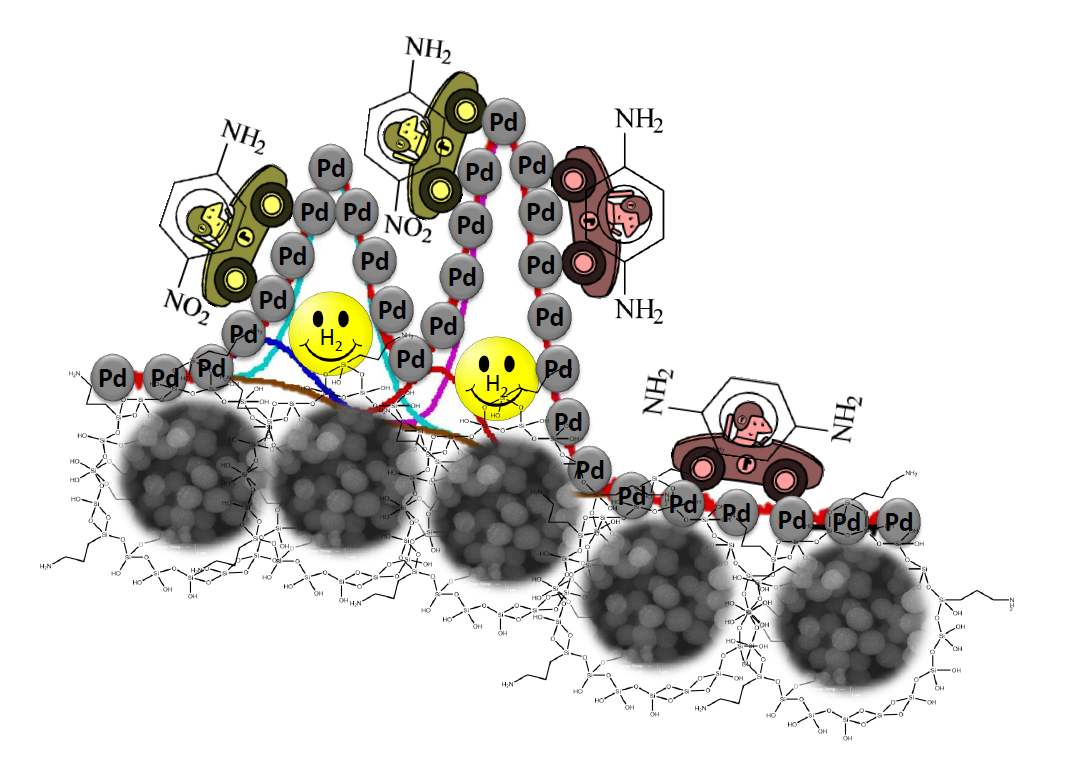The article describes synthesis of aminoorgano-functionalized silica as a perspective material for catalysis application. The amino groups have electron donor properties valuable for metal chemical state of palladium. So presence of electron donor groups is important for increasing of catalysts stability. The research is devoted to investigation of silica amino-modified support influence on activity and stability of palladium species in 4-nitroaniline hydrogenation process. A series of catalysts with different supports such as SiO2, SiO2-C3H6-NH2 (amino-functionalized silica), γ-Al2O3 and activated carbon were studied. The catalytic activity was studied in the hydrogenation of 4-nitroaniline to 1,4-phenylenediamine. The catalysts were characterized by scanning electron microscopy, transmission electron microscopy, x-ray photoelectron spectroscopy, Fourier transform infrared spectroscopy and pulse chemisorption of hydrogen. The 5 wt. % Pd/SiO2-C3H6-NH2 catalyst exhibited the highest catalytic activity for 4-nitroaniline hydrogenation with 100% conversion and 99% selectivity with respect to 1,4-phenylenediamine.

